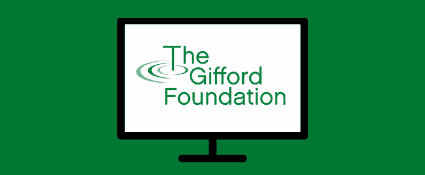ChatGPT: Can It Help Your Organization?
Published May 16th, 2023
AI technology has made some huge advances over the past six months, and one of the most interesting aspects of this evolution is its accessibility. Suddenly, these groundbreaking tools are being rolled out almost right away for public consumption. Some say too quickly, given that competition between tech companies has led to some AI chatbots being released with significant bugs. So can ChatGPT help your organization? Let’s explore what it is, what to watch out for, and how to safely begin using it as a resource.
What is ChatGPT?
Remember how exciting it was the first time you could ask Siri what the weather would be? ChatGPT is the next level up, if not several levels up. It was created by a San Francisco-based company called OpenAI and released publicly in November of 2022. There is a free version available once you make an account, however you must upgrade to premium to gain full and unlimited access.

ChatGPT is a chatbot that uses AI to answer questions and complete tasks for users, including writing emails, generating code, planning events, and much more.
It is a chatbot, which means you type to it and it responds to your inquiries. However, the groundbreaking AI technology behind it means that it can create original, complex, and highly personalized responses. You can ask it to write a three-paragraph essay on the causes of the American Civil War, draft an email to your boss asking for time off, or proofread a press release you wrote. It can generate code, help plan events, and write an original script for your favorite TV show. The list is endless, and the results can be both highly impressive and wildly inaccurate. More on this later.
Why Should I Care?
Have you ever wished someone could instantly proofread the copy you just wrote? Have you ever felt like you were forgetting something obvious while planning an event or brainstorming a marketing campaign? Did you ever waste an hour trying to draft a simple letter to your board because the words just wouldn’t come?
ChatGPT can help with all of these things, but don’t get carried away. It can feel like a real person helping you with your work, but like a real person – it may be completely wrong about many important things. One easy way to prove this point is by asking it to multiply large numbers. For complicated reasons about how the learning model is set up, it struggles to multiply 1,565 by 2,354 despite the fact that pocket calculators have been doing that for decades with perfect accuracy.
However, it can still be a life saver so long as you are cautious and double check what it tells you. Here are some introductory prompts that you can try pasting into ChatGPT to get started:
- Write a letter to [organization name] donors letting them know that there will be a fundraiser held on [insert date and time] at [insert location]. Tickets are [insert price] and the dress code is business casual.
- What are some strategies to increase enrollment in our new program?
- Edit the following text: [paste something you already wrote]
After testing these, it quickly becomes clear that there are certain situations where this technology can dramatically save time and effort, or help catch a mistake. The suggestions for how to promote an event, for example, are likely to be very generic. But that is still helpful because of how it can spark new ideas, or remind us when we have forgotten a key step somewhere along the way.
The Takeaway
If this makes you uncomfortable, that is completely normal. ChatGPT is a new and constantly evolving technology which may look completely different a month or two after this article is published. That said, it is the beginning of a new era that will once again redefine our relationship with technology. All of us will be in a position to interact with AI in the coming years, so having a grounded understanding of how to do that is an important thing to start practicing.
Below is a (brief) list of best practices to keep in mind as you begin:
- Always double check any numbers, historical claims, or other information presented as fact by ChatGPT.
- Use it as an addition to, not a replacement for, human advice.
- Be transparent: talk with your team about how you are using the technology, and share your experiences. There is no reason to feel guilty about using it so long as you are open about your process and are actively taking precautions to correct its errors.
Are you already using ChatGPT in your work? If so, we would love to hear from you. Share your experience by sending an email to maximilian@giffordfoundation.org


